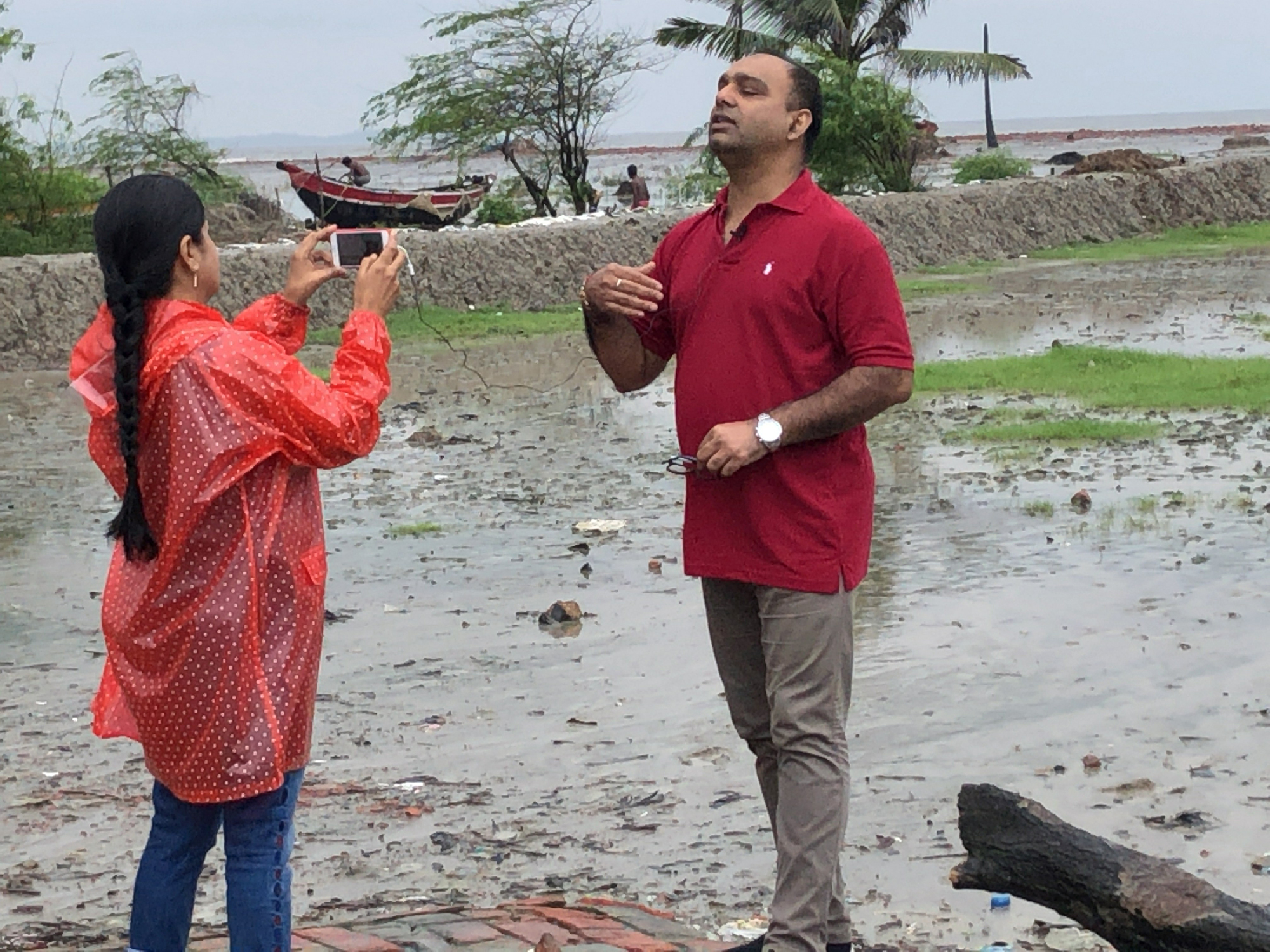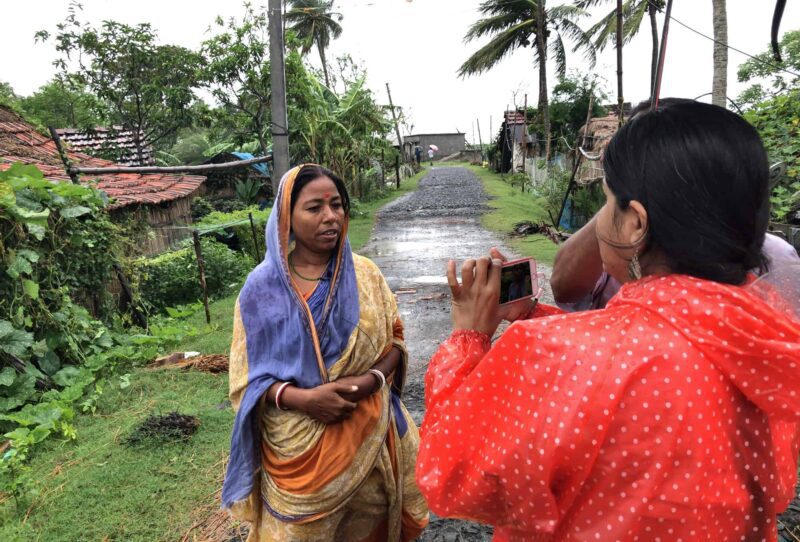Indian journalists gathered at the mouth of the Ganges River in West Bengal, India last month to learn about the effects of sea level rise, at a workshop organized by Internews’ Earth Journalism Network (EJN). Held as part of EJN’s Bay of Bengal project , the workshop focused on people who have been displaced by sea level rise and are in danger of being displaced again.
The 24 journalists and experts who participated met with groups of people who live in Ganga Sagar Island, located right at the point where the Ganges meets the Bay of Bengal. It is a site holy to Hindus because a sage is said to have meditated there, and hundreds of thousands of pilgrims congregate every mid-January at the temple dedicated to the sage Kapil Muni and to take a dip in the waters. But the Kapil Muni temple has been repeatedly engulfed by the rising sea, at a rate that has been increasing with climate change. The current temple is at least the fourth version. When it was built in the 1970s, it was more than 800 meters from the high-tide line. Today, the sea laps at the steps of the temple during every high tide.
Almost all the residents of Ganga Sagar Island are farmers or fishers. Many of them were resettled here over the last three decades when a nearby island – Ghoramara – lost most of its land to the rising sea. Now those residents are facing the same peril all over again, as the sea threatens to erode and engulf large parts of Ganga Sagar Island too. Women feel particularly vulnerable because many men have migrated to other parts of India to make a living since they could no longer earn an income from the eroding soil. The men send money on which their families depend, and they come home once or twice a year. The rest of the time, women run their families on their own and fight to keep crops growing despite salt water intrusion repeatedly killing the crops.

Bankim Chandra Hazra, the local member of the West Bengal legislative assembly and chair of the Ganga Sagar-Bakkhali Development Authority, told the visiting journalists that the administration was putting up a sea wall in an effort to save the Kapil Muni temple and planting mangroves around the proposed wall. He also said he always ensured that people who lost farmland or homes to the rising sea received compensation. There was little more he could do except keep raising the issue in the state assembly, the legislator admitted.
This was the second of three workshops the Bay of Bengal project is conducting from July to September this year. The first took place in July in Tuticorin, India, in partnership with the M.S. Swaminathan Research Foundation.
The 14 journalists who participated in that convening spoke about the insights they gathered through interactions with experts and communities they visited during a field trip to three villages in Tamil Nadu. Some important observations the group recounted were seeing communities operate as agents of change; the need for scientists to reach out to fishing communities and play a stronger role in decision making; the need to improve journalists’ understanding of ecosystem rehabilitation; and the importance of involving authorities and industry voices in discussions at workshops.
The Tuticorin workshop also included a session where participants practiced pitching an environmental story to their editors in a way that made it more likely to get accepted for publication.
The next BoB workshop will take place in mid-September in Shatkhira, Bangladesh.
(Banner photo: EJN Workshop participantg Nidhi Jamwal speaks to a resident displaced once by the rising sea from Ghoramara Island & now in danger of being displaced again for the same reason, Ganga Sagar.)
